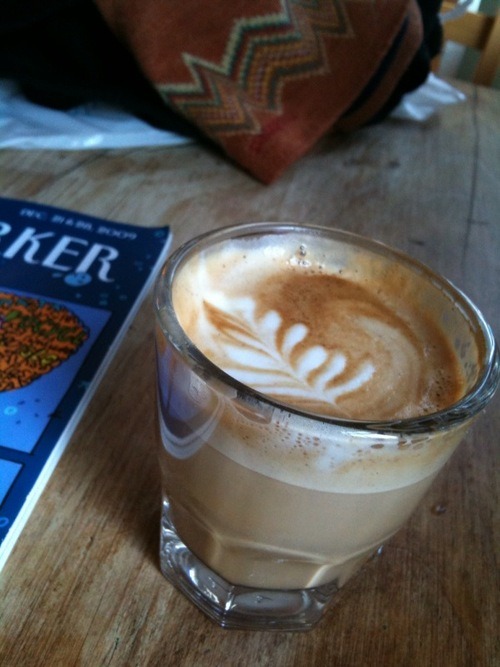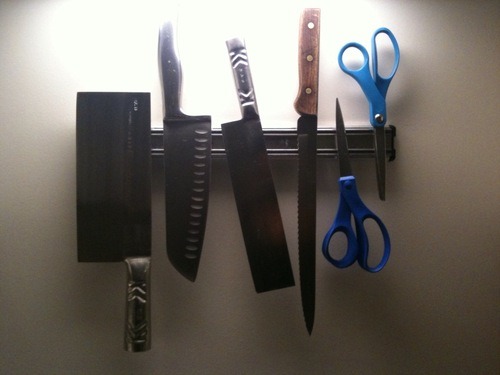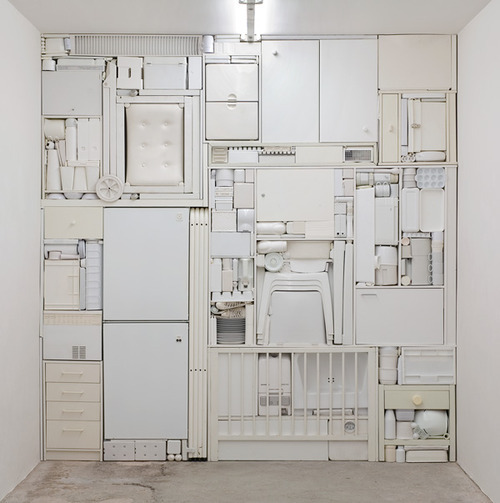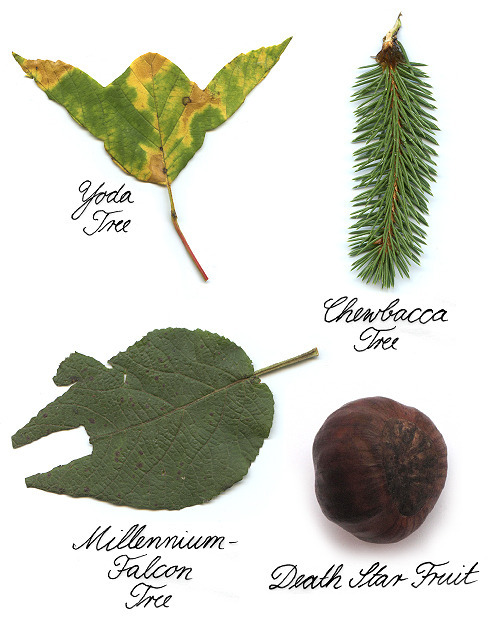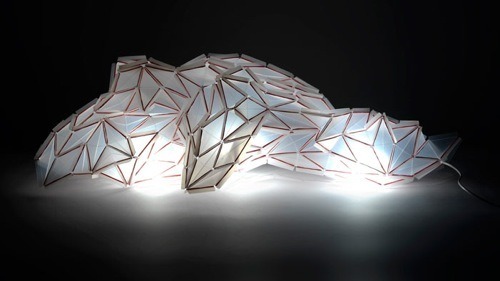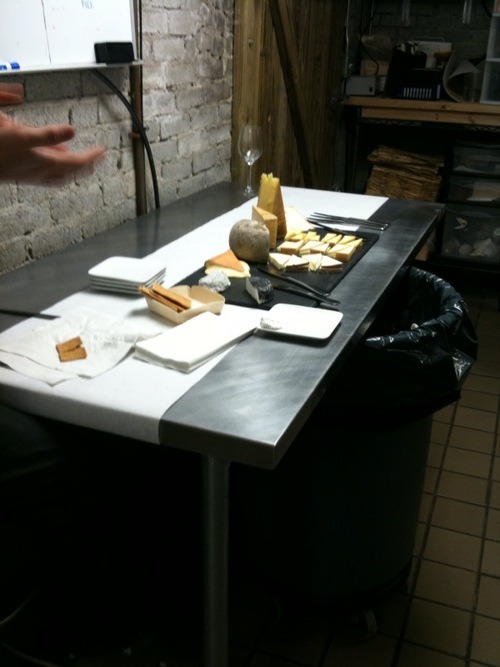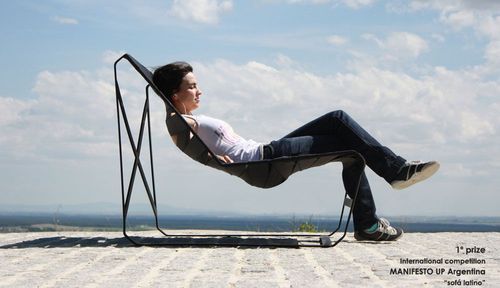
Dec 24, 2009
Dec 23, 2009
Dec 17, 2009
a pune, or a play on words

Posted by
vaughn tan
0
comments
![]()
![]()
Labels: craft, execution success, neat, san francisco
brisk; tasty
two observations:
- took my bike to coffee yesterday at 8am when it was -4F with wind chill (-20C, if you're in a country where the system of measures is rationalized). not a good time to forget gloves or a hat.
- the swedish have a baked good called a lussebulle (named for saint lucy, who appears to be its patron saint) that shows up around this time of year, after the feast of saint lucy. the lussebulle is shaped out of yeasted enriched bread spiced with saffron and cardamom, two of the three most expensive spices in the world by weight. the subtle ostentation is very appealing.
Posted by
vaughn tan
0
comments
![]()
![]()
Labels: bread, execution failure, execution success, food, stockholm
Dec 14, 2009
not single spies but in battalions
as the semester winds to a close, everything speeds up and slows down at the same time. this year, the end of fall is a little more fraught than usual: everything got bumped up three weeks so that we'd be done with exams and grading and papers before christmas. much better than spending the end of the old year and the start of the new one with many swords of damocles overhead. other benefit: this is the only fall semester i've ever spent here without the prospect of toiling to classes through snowdrifts. we'll still have the snow, but we'll be toiling through it on our way to things that are not class.
Posted by
vaughn tan
0
comments
![]()
![]()
Labels: bread, cambridge, execution failure
Dec 13, 2009
the moor
Breath held like a cap in the hand.
It was quiet.
What God there was made himself felt,
Not listened to, in clean colours
That brought a moistening of the eye,
In a movement of the wind over grass.
There were no prayers said. But stillness
Of the heart's passions – that was praise
Enough; and the mind's cession
Of its kingdom. I walked on,
Simple and poor, while the air crumbled
And broke on me generously as bread.
Posted by
vaughn tan
0
comments
![]()
![]()
Dec 11, 2009
scott nearing, on the good life
The good life is never stable, never secure, never easy and never ended. It is a series of steps or stages, one leading into the other and all, in their outcome, adding, not subtracting; augmenting, not diminishing; building, not destroying; creating, not annihilating.
unfortunately, not so easy to implement.
Posted by
vaughn tan
1 comments
![]()
![]()
Dec 9, 2009
Dec 8, 2009
sand
Posted by
vaughn tan
0
comments
![]()
![]()
Labels: cambridge, dis-ease, epistemology, execution failure, execution success
silver line


Posted by
vaughn tan
0
comments
![]()
![]()
Labels: boston, cities, craft, design, execution success, type craft
Dec 7, 2009
Dec 6, 2009
san francisco
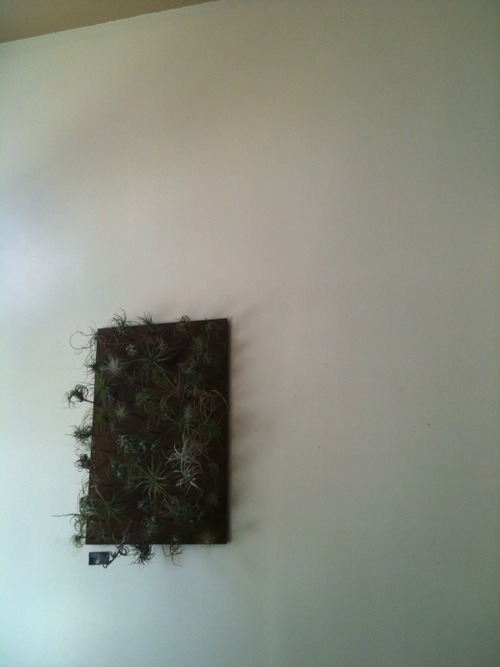
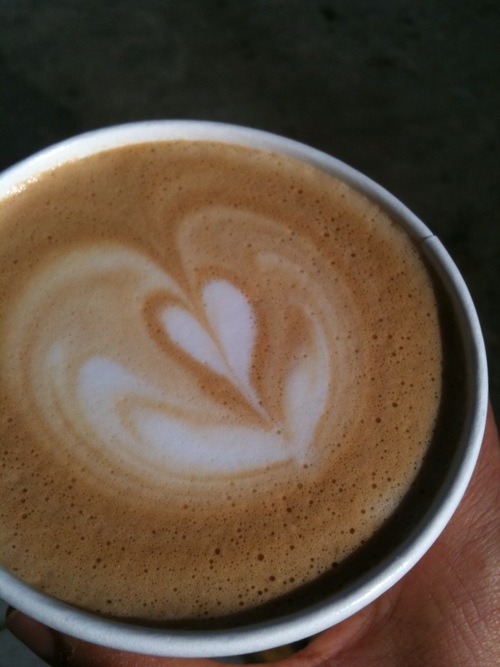 ritual, valencia st
ritual, valencia st
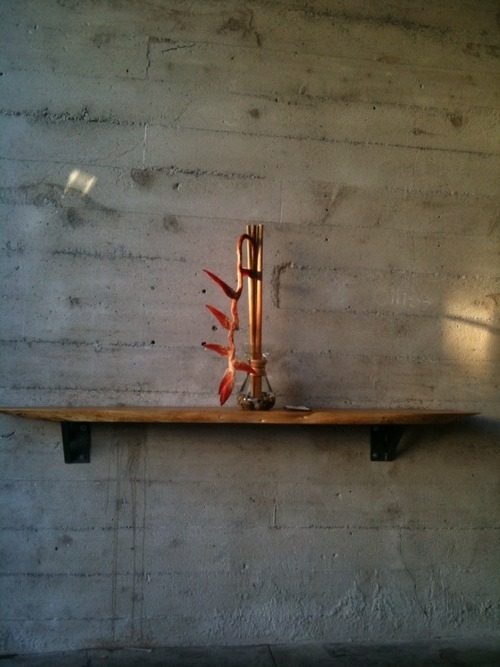 sightglass, 7th st
sightglass, 7th st
 humphrey slocombe, harrison st.
humphrey slocombe, harrison st.
Posted by
vaughn tan
0
comments
![]()
![]()
Labels: drink, food, san francisco
Dec 2, 2009
the death of uncool
It’s odd to think back on the time—not so long ago—when there were distinct stylistic trends, such as “this season’s colour” or “abstract expressionism” or “psychedelic music.” It seems we don’t think like that any more. There are just too many styles around, and they keep mutating too fast to assume that kind of dominance.
...The idea that something is uncool because it’s old or foreign has left the collective consciousness.
I think this is good news. As people become increasingly comfortable with drawing their culture from a rich range of sources—cherry-picking whatever makes sense to them—it becomes more natural to do the same thing with their social, political and other cultural ideas. The sharing of art is a precursor to the sharing of other human experiences, for what is pleasurable in art becomes thinkable in life.
Posted by
vaughn tan
0
comments
![]()
![]()
Dec 1, 2009
Nov 30, 2009
the buzz
Haagen-Dazs has those extra “a’s in its name but also has a nice promotion to help bees. Honey bees of course. From Nov 5 to 11 Haagen-Dazs will run a twitter campaign that benefits the University of California at Davis and its noisy, dangerous, sticky programs to preserve bees. This will cause a lot of buzz.
Posted by
vaughn tan
0
comments
![]()
![]()
Nov 29, 2009
the circle unbroken
joan baez with a cast of muppets. note the pig in the upper left corner during the finale. [thx julian]
Posted by
vaughn tan
1 comments
![]()
![]()
Nov 26, 2009
"it's like twitter. except we charge people to use it."
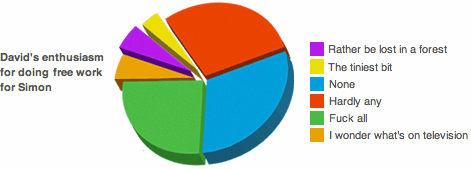
i sometimes feel like doing this to people who ask me to design stuff for them for free.
Posted by
vaughn tan
0
comments
![]()
![]()
Nov 21, 2009
Nov 19, 2009
milton glaser on drawing
milton glaser is a partner in pentagram, one of the most influential design companies of the last century:
the act of drawing makes me conscious of what i'm looking at. if i wasn't drawing, i have the sense that i would not be seeing. ... i always think of every drawing as kind of a miraculous occurrence. it takes a while to do drawing that you find interesting. curiously, people think that the difficulty of drawing is making things look accurate. but accuracy is the least significant part of drawing. but you have to learn how to draw accurately before you can learn to do anything else. then you can begin to think about drawing expressively. that's another game entirely.
Posted by
vaughn tan
0
comments
![]()
![]()
granolanauts
update: jim reveals the granolas.
jim leff put together a granola blind tasting today in the east village at dba on 1st ave (which has a fine selection of draught beers and ciders). in these photos, you see the granolanauts surveying an expanse of assorted granolas in an intrepid fashion, then, midway through, in a less intrepid fashion. granola is not a low-calorie food.
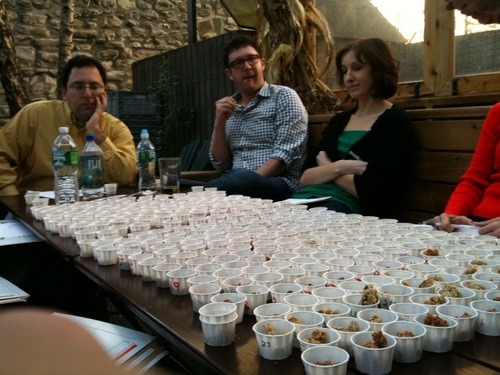

Posted by
vaughn tan
1 comments
![]()
![]()
Labels: craft, epistemology, food
Nov 18, 2009
Nov 17, 2009
steak filter
video signal of the steak cooking, passed through the steak as it cooks. signal degrades as the steak loses moisture. i wonder if you would get the same result if the steak were cooked sous vide.
Posted by
vaughn tan
2
comments
![]()
![]()
Nov 13, 2009
lifebox

a few weeks back, paul stamets wrote to the scifoo mailing list to ask if anyone wanted one of the first run of his lifeboxes. these are cardboard panels seeded with tree seeds and symbiotic fungal spores that improve the growth and development of the seedlings. i wrote to say i wanted one but never heard back. i forgot about it. then, today, a small box appears on the front step.
which is nice.
Posted by
vaughn tan
0
comments
![]()
![]()
Labels: neat, sustainability, wood
Nov 9, 2009
experiments in food


Posted by
vaughn tan
1 comments
![]()
![]()
Labels: art, complexity, craft, epistemology, food, instruction, sociology, technology
Nov 8, 2009
that's a good point
.jpg)
Posted by
vaughn tan
0
comments
![]()
![]()
better beverages
this is nils noren pouring a liquid nitrogen frozen cocktail made with clarified ashmead's kernel. in one of the stainless tubs in back is the best gin i've ever had, distilled from vodka blended with cilantro, cucumber, juniper berry, roasted orange peel, and thai basil, and served so cold it was syrupy.
Posted by
vaughn tan
0
comments
![]()
![]()
chocolate
finally, someone who agrees with me that chocolate is just way too easy. the best dessert i've had yet was a peach leaf and almond semifreddo with a black mulberry granita, at quince; it was the apotheosis of restraint. i think this might be sort of nice too.
Posted by
vaughn tan
0
comments
![]()
![]()
Nov 7, 2009
Nov 4, 2009
science in the kitchen
today there was a big live fish flopping about, and then they severed its spine and destroyed its spinal nerve and it was placid. here is a picture of preserved eggs instead.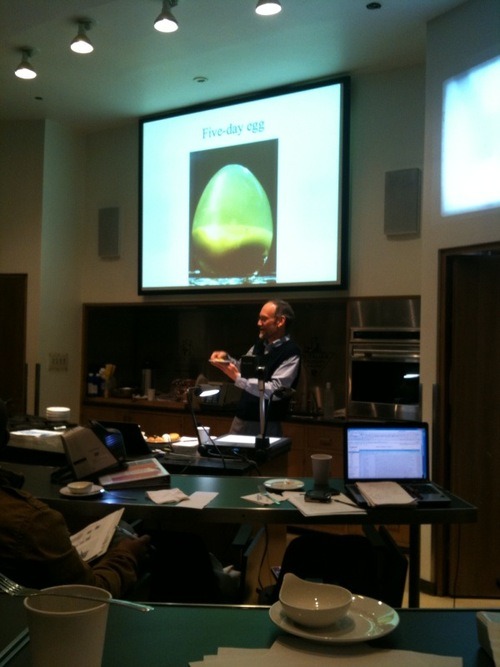
Posted by
vaughn tan
0
comments
![]()
![]()
Labels: food
Nov 3, 2009
Nov 2, 2009
sing sang sung
remember this?: http://en.wikipedia.org/wiki/The_Missing_Piece_(book)
Posted by
vaughn tan
0
comments
![]()
![]()
Nov 1, 2009
Oct 31, 2009
on fonts
to the best of our knowledge examines typography with tobias frere-jones, jonathan hoefler, and matthew carter.
Posted by
vaughn tan
0
comments
![]()
![]()
Oct 30, 2009
wilco|I am trying to break your heart
the wilco documentary by sam jones (in 6 parts on youtube). crafted music.
Posted by
vaughn tan
0
comments
![]()
![]()
Oct 28, 2009
brainwave sofa
lucas maassen's brainwave sofa is a representation of a 3 second wave of Alpha brain activity
captured with an EEG, modeled, milled in 3D foam, and upholstered by hand.

Posted by
vaughn tan
0
comments
![]()
![]()
Oct 26, 2009
Oct 24, 2009
Oct 23, 2009
Look Around You - Sulphur
from experiment 2, an investigation into the effect of iron on sulphur (6:26): "for this experiment, we will be using a common household item rich in iron. that's right: champagne. a quantity of champagne is poured into a large glass trough. we're using about 17 bottles worth. there's a lot of cheap brands on the market these days, but we suggest using one of the better ones. there's no hiding quality. next, a quantity of sulphur is added and the mixture is agitated, producing sulphagne. write that down."
Posted by
vaughn tan
0
comments
![]()
![]()
you are what you eat
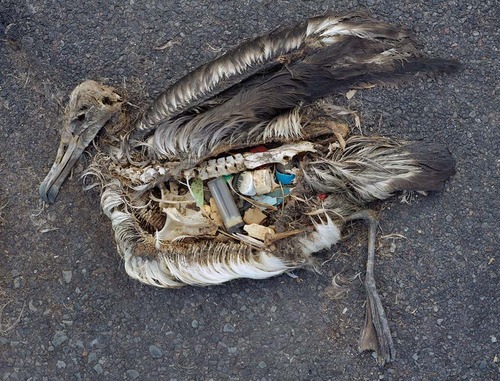
chris jordan photographs the gut contents of albatross chicks on midway island. (its a long way away from anywhere.)
Posted by
vaughn tan
0
comments
![]()
![]()
Oct 22, 2009
woodworm
Woodworms I, by Zimoun
Sound installation based on live sounds of woodworms.
Woodworms, piece of wood, microphone, soundsystem.
Size: variable
Edition: unique
Year: 2009
Posted by
vaughn tan
0
comments
![]()
![]()
Oct 21, 2009
Oct 19, 2009
burger lab

a hamburger today reverse-engineers the shake shack burger.
Posted by
vaughn tan
0
comments
![]()
![]()
Oct 15, 2009
Oct 8, 2009
kaiseki+
this post got neatened up and, through an improbable sequence of events, is now on the atlantic food channel.
understanding kaiseki (with a slideshow of dishes from hon-kogetsu, in osaka, circa 2004)
Posted by
vaughn tan
0
comments
![]()
![]()
Labels: art, atlantic food, complexity, craft, epistemology, food, neat
Sep 13, 2009
on kaiseki
startersshiizakana/sakizuki: appetizers (the former accompanying sake)zensai: vegetable appetizers (yet more appetizers, but these are more substantial)suimono: the soup courseseasonalstsukuri/mukuzuki: sashimihassun: a platter (the name derives from the platter's edge-length, which is 8 inches or hassun) of complementary foods from either the seas and the mountains or the fields and the streams. a hassun for the early spring might be tai (sea bream) and a mountain herb like fukinoto (butterbur buds); one for the midsummer might be freshwater eel (unagi) and new potatoes (imo).ways of cookingyakimono: grilled courseaemono: dressed course (dressed with some kind of sauce -- this course is usually dropped in smaller kaiseki, as far as i know)nimono: simmered coursemushimono: steamed coursesunomono: vinegared course (quick-pickled is the best analogue)riceshokuji: course eaten with ricethen dessert is usually fresh fruit of some sort, plus matcha and a wagashi (if in kyoto, or in a really fancy restaurant, the wagashi will be made of wasanbon, a hand-refined sugar from shikoku). the rice course is specially set apart because, really, no meal is complete without rice (even if it is only a token amount of rice). this is true in japan as it is in china and many other parts of east asia.
Posted by
vaughn tan
0
comments
![]()
![]()
Labels: art, complexity, craft, epistemology, execution success, food, history, process, translation
Sep 9, 2009
research directions
a new year begins, and work and research projects begin to coalesce or, in some cases, resurface. here's what's on the plate:
- a quantitative analysis of the determinants of formal association within developer groups on sourceforge.net, backed by survey and interview data. this should be an opportunity to deploy some interesting hazard rate models and, with the survey data, some new multiplex network analytic techniques. also talking again with berkman's law lab about supporting a field experiment on the same domain once the initial quantitative analysis is complete.
- experimental research on search behavior. we're in such early days on this that it's not really worth discussing at the moment but things should come to a head within the next 2 months.
- engineering sciences 147, which i'll be tf-ing. i'm excited about this because it will be one of a small handful at harvard that emphasises the process of innovation as well as the product and seriously grapples with the benefits and disadvantages of interdisciplinarity. if you're in the undergraduate college, think about taking this class. (and check out also this rather slick thing the lab produced for the class.)
- a theoretical treatment of diffusion in organizations, grounded in the empirical data i collected for a previous project on information efficiency in the north american haute cuisine organization.
Posted by
vaughn tan
0
comments
![]()
![]()
Labels: research, sociology, technology, theory
informal
When we conjure up impressions, ideas, and images of the engineer, we tend to think of an ingenious individual and Promethean spirit who overcomes huge obstacles to realise the most daring constructions. The tallest, the biggest, the largest, are the records set by the great engineers. The Isambard Kingdom Brunels, the Gustave Eiffels, become the heroes in our transgressions of Nature. In the public mind the engineer turns into the supreme technological legislator--a hard person of science--who makes the impossible work. This romantic notion of the engineer conspires to keep art and science separate. Engineering as a catalyst to inspire a creativity is not the generally held view. But in the Greek word 'techne' the unity of engineer-architect describes a sharing of design values, the diagram and calculation, the concept and proportion being viewed as cycles of noetic invention ... A cycle of invention and post rationalisation runs from one start to another--and in between are the judgements and criticisms one makes. What remains constant is the motivation to keep entering that creative dialogue between architecture and engineering, and the writing of new stories.cecil balmond, informal.
Posted by
vaughn tan
0
comments
![]()
![]()
Labels: complexity, craft, epistemology, execution success, instruction, intuition, scalefree, technology, theory, translation
Sep 8, 2009
skillet pizza: this changes everything
if you are lucky enough to live in brooklyn, close to di fara, you have the opportunity to eat, daily if you so desire, a pizza that will cause you to jump up and down with pleasure during and after each bite: the tremendous heat (more than 700F) of a commercial pizza oven cooks the pie in just a couple of minutes. this short, intense burst of dry heat yields a pizza crust that is lightly charred on the underside and on the rim, moist and tender within, light and airy, chewy yet crisp, with sauce and toppings bubblingly-hot but not yet desiccated. if urban manhattan is not your domicile, and you have high standards for your pizza, you may be forced to go to great, often costly, lengths. fortunately, there is an inexpensive, easy, and incredibly effective solution to this problem. we tested it tonight (making it 8 runs in total) and can confirm that there is, indeed, jumping up and down with pleasure both during and after each bite, and sounds of pleasure also. detailed instructions for this pizza follow, after a brief discussion of process.

commercial ovens designed to cook a steady stream of pizza or bread have thick stone or refractory brickwork floors on which the cooking takes places; this floor is preheated to a high temperature and has sufficient thermal mass that placing wet dough on it reduces the temperature by only a small amount--the side effect is that whatever is on the oven floor also cooks extremely quickly. commercial ovens are also free of the thermostatic regulators that prevent most home ovens from reaching the high temperatures for which they are almost all designed (during a self-clean cycle, the temperature inside a home oven reaches north of 900F). clearly, of the many trials faced by the home cook hell-bent on the pizza of his (or her dreams), the two biggest are
- achieving a high-temperature cooking base to crisp the bottom of the pizza.
- achieving a high-temperature cooking environment to rapidly cook the top of the pizza.
attempts to surmount these twin problems have included (but are not limited to*)
- buying or building a pizza oven much like a serious pizza restaurant would have. while solving both problems, this solution is not feasible for those with insufficient room (or sufficient floor bracing) for an 800-pound brick structure.
- using a pizza stone. these stoneware discs are usually 1/2" to 3/4" thick and take about 80 minutes to heat up fully (ie, for the thermal mass to reach saturation) in a very hot oven. this solves problem 1, but in a spectacularly energy-inefficient way.
- jerry-rigging home ovens to cook on the cleaning cycle. this involves subverting the automatic lock that usually engages when the cleaning cycle is turned on. if successful, a magnificent pizza. if unsuccessful in opening the oven and retrieving the pizza, ashes, a calcined pizza stone, and the smell of smoke pervading throughout. i know this from bitter experience as, apparently, does jeffrey steingarten.*
- investing in specialized home pizza-oven machines that surround the pie with ample heat. perfect, but at what price? also, i despise equipment that has only one purpose.
does a cast-iron skillet have enough thermal mass to cook and lightly char a pizza base if thoroughly preheated, then taken off heat?- does a broiler generate enough radiant heat and hot air to cook and lightly char a pizza top fast enough to not dry it out?
- can a preheated skillet and broiler be combined to produce pizza awesomeness?
instructions for a home pizza of stunning perfection:
- [4-6 days before you want pizza] prepare a good dough and allow it to mature. i can add nothing to jeff varasano's minutely-detailed recipe and instructions. shape into single serving balls of dough and allow to mature in the fridge.
- 60-80 minutes before you want your pizza, take the dough out. lightly coat each ball of dough in oil a separate bowl and leave to warm up to room temperature and double in size. do not neglect the oil, as it prevents the dough from adhering inconveniently and frustratingly to the bowl later on. if the dough appears laggardly (ie, if it isn't doing much of anything after 20-30 minutes), placing it in a gently-warmed oven helps accelerate the process: switch on the oven for a minute, then shut it off and open the door to vent hot air before placing the dough inside. do not use this dough until it has at least doubled in volume (this may be a smaller visual change than you expect; be vigilant and remember that volumetric expansion is less dramatic).
- prepare your sauces and toppings. have a spoon for every sauce and all the toppings grated, cut, and ready for extremely rapid deployment.
- prepare your broiler drawer by putting baking sheets or other heat-proof objects into the broiler drawer. the skillet will rest upon these objects, and the intent is to raise the skillet as close to the broiler heating element as possible without touching the element. you should be able to slide the skillet into the broiler easily. this is an important step that you should not neglect.
- when all is in readiness, turn on the broiler and begin preheating the dry, ungreased skillet on the stovetop on the highest flame setting. the skillet should preheat for 8-10 minutes to reach thermal saturation. as soon as you begin heating the skillet, lightly flour a wood cutting board or (better yet) a pizza peel. if you flour too assiduously, there will be flour pockets under the pizza when it is baked. these will burn and become bitter, while robbing your crust of the slightly charred patches that make it crisp, yet tender.
- [note that everything in step 6 should happen within 3-4 minutes, at most.] with about 4 minutes of skillet heating to go, begin to shape your pizza. scoop a ball of risen dough out of its bowl, taking care to deflate it as little as possible. holding it gently by an edge, allow gravity to stretch it out. move around the edge so that the ball of dough becomes a thin disk with a slightly thicker edge all around. speed here is of the essence. lay the disk on the floured board and shake the board from side to side to prevent the dough from sticking. immediately sauce it lightly, being careful not to deflate the dough by pressing down with your saucing spoon, then add toppings. speed, not perfection, is the objective: if you dally, the wet dough will stick to your board and be impossible to slide onto the hot skillet. because the pizza cooks so quickly, a small amount of sauce will remain moist and delightful and allow the crust underneath to aerate.
- slide the pizza onto the skillet. you may find that having another pair of hands to guide the leading edge of the pizza onto the skillet helps. there is no way to get this right without practice or to describe in words the experience of sliding a damp, soft, floppy disk of dough covered in liquids onto a smoking iron skillet. your first pizza is likely to be a mess, but you should bake it anyway. persevere, but clean the charred bits off the skillet before you do so. when your pizza is in the skillet, immediately take the skillet off the flame and place it in the preheated broiler with the handle of the skillet pointing as far to one side of the oven as possible. close the broiler door as quickly as possible. place a heatproof dish into the main oven compartment (not the broiler) to warm up.
- after 45 seconds, rotate the skillet so that the handle points to the opposite side of the oven. after 1 minute 30 seconds, pull out the pizza to see if the unsauced rim has begun to char lightly. if not, push the skillet back in and cook for another 20 seconds, then check again. if your broiler runs cool, your pizza may take up to 3 minutes to cook. when cooked, take the pizza out of the broiler and place it on the now-warm plate you put in the oven in step 7.
Posted by
vaughn tan
0
comments
![]()
![]()
Labels: bread, craft, execution success, food, technology
Aug 31, 2009
the wasteland
went to lechmere tonight in search of a tasty beverage and can confirm that 1) it is infested by chain stores, 2) all of which are closed after 9.30pm, 3) and what is open after 9.30pm is reprehensible.
Posted by
vaughn tan
1 comments
![]()
![]()
Labels: cambridge, cities, drink, execution failure
Aug 29, 2009
paris, recollected
 through an improbable sequence of events, i wound up in paris for 10 days a few weeks ago. i spent most of that time underground, reading for generals between answering questions, in the main space at le laboratoire. events and observations:
through an improbable sequence of events, i wound up in paris for 10 days a few weeks ago. i spent most of that time underground, reading for generals between answering questions, in the main space at le laboratoire. events and observations:
- the first morning, i ran through the louvre to the seine, and then across the bridge to the left bank on my way to the champs de mars. i slowed down passing the overflowing summer gardens at the musee de quai branly, and then did a double take at the vegetal wall by patrick blanc covering the entire administrative building (longer article here). much of the wall up to head height is covered with a particularly soft and fuzzy moss that invites you to hug it, so i did.
- the tubular metal seating in paris parks and gardens is magnificent, especially the low reclining chair, which is perfect for reading. one evening, after failing to find the pont des artes, we sat in these chairs in the tuileries garden with a large bottle of warm orange juice and watched the sun go down over the obelisk.
- france does not believe in adequate ventilation.
- i met a friend from google for drinks and one of his ex-googler friends came along too. she went to pastry school in paris and now lives there, making stunningly good artisanal caramels in her paris pastry lab. (extra points if you know what a galipette is. i didn't. trust the french to have a polite word for it.)
- shanaz showed up from zurich for some kind of wedding celebration, and we made an executive decision to go to le comptoir du relais. it was great: pea soup with mint and tapioca, a terrine of pork, a poêlée of girolles and zucchini topped with a shaving of dry-cured pork, beef cheeks with tremendous depth of flavour, and a round slab of crisp, tender, slightly gelatinous suckling pig.
- some people got invited to mathieu lehanneur's workshop and i insinuated myself into the contingent. five (or possibly six) floors up, at the top of an old building surrounded by fabric stores, is a large workspace filled with marvelous things. it reminded me of the roomful of olafur eliasson's* maquettes that traveled with take your time, except much slicker.
- all the boulangeries and patisseries i wanted to go to were closed. chance alone guided me to regis colin, on rue montmartre, at the end of another early morning run into the 2nd, 3rd, and 4th arrondissements. it was an unpromising-looking store and they had just opened for the day. the bleary-eyed counterlady sold me a compact croissant and a pain au chocolat, both still warm from the oven. i ate the croissant standing on the corner as the sun cleared the horizon. it may have been the best croissant i've ever had. (as it turns out, it took over 18 months for me to run across a better croissant in narita airport.)
* on that note: the Institut für Raumexperimente
Posted by
vaughn tan
0
comments
![]()
![]()
Labels: art, boondoggles, cities, craft, food, paris, sustainability, technology, translation
the sackler

Posted by
vaughn tan
0
comments
![]()
![]()
Labels: art, cambridge, craft, execution success
Aug 28, 2009
the generals
are done with; suddenly, there is a sense of release, and the days are filled with hours to each of which a determinate number of pages to be digested is not attached. we celebrated with inglourious basterds and discovered that cinema on friday morning is a blissfully isolate experience.
Posted by
vaughn tan
0
comments
![]()
![]()
Aug 20, 2009
maps and representations
We say the map is different from the territory. But what is the territory? Operationally, somebody went out with a retina or a measuring stick and made representations which were then put on paper. What is on the paper map is a representation of what was in the retinal representation of the man who made the map; and as you push the question back, what you find is an infinite regress, an infinite series of maps.gregory bateson, steps to an ecology of mind
Posted by
vaughn tan
1 comments
![]()
![]()
Labels: complexity, epistemology, maps, scalefree, sociology, translation
Aug 14, 2009
the perfect reading chair
the height and pitch of the back are perfect. these chairs are literally strewn all over parisian parks and gardens but, despite repeated searches, i can't figure out where to get one.
update: the brainy julien benayoun has solved this puzzle. this perfect reading chair is part of the luxembourg family of outdoor furniture designed by frederic sofia and made by fermob.
Posted by
vaughn tan
2
comments
![]()
![]()
Labels: craft, execution success, furniture, paris
on a street in paris
Posted by
vaughn tan
0
comments
![]()
![]()
Labels: execution success, paris
ike jime smackdown
Certain fish that swim for very long periods have highly a highly developed autonomic nervous system for swimming (sounds like the CPG’s Bob was talking about). These fish, like bass, like horse mackerel, etc. benefit from spinal cord destruction. Other fish, like plaice, that don’t have highly evolved constant swimming reflexes, don’t benefit (or at least not as much). The paper recommends doing a species by species test to see which fish benefit the most. The paper didn’t mention CPG’s (in fact no paper did that I could find). Someone needs to do some research on that. So then, when you destroy the spinal cord, you destroy the swim reflex, which helps reduce ATP loss, delaying and softening rigor, increasing the quality of the fish.
Posted by
vaughn tan
0
comments
![]()
![]()
Labels: execution success, food, technology
Aug 11, 2009
more cooking issues
i keep telling people that being a graduate student is, apart from the comparatively lousy pay, the best thing ever: you get to do stuff you're interested in, doze off reading, work in cafes, the whole bit. then i read the latest post from cooking issues and it is clear that in fact the real best thing ever is to be dave arnold and nils noren. this episode, they do an in-depth analysis of ike jime (a semi-mystical japanese fish-killing process purported to yield superior fish flesh).
Posted by
vaughn tan
0
comments
![]()
![]()
Labels: biology, craft, execution success, food, technology, theory
convivium
Posted by
vaughn tan
0
comments
![]()
![]()
Labels: books, craft, drink, execution success, food, neat, type craft
Aug 9, 2009
fond of the pond
pachaug pond this weekend. on saturday evening, the sky at dusk was wreathed in pale cirrus clouds that appeared to emanate from the sun, which glowed from below the horizon in the gap between an island in the pond and the westerly shore. we took kayaks and canoes out on the water. everything glowed in the blue light that radiated from the sky, and small insects made circles on the still surface; we heard the band clearly, playing in the bay, and the beacon on the beach flashed on as the last light faded. later, when the air turned cold and a layer of mist appeared on the water, an old christmas tree was consigned to the fire and went up in a rush of flames, and pipes and cigars appeared. people eventually drifted off to tents and bed. the acoustic guitars came out at 1am and drew the circle of people in chairs tightly around them. dozed off around 4am in a hammock strung between two paper birches, to music and the sound of the tea-coloured pond lapping at the breakwater.
Posted by
vaughn tan
0
comments
![]()
![]()
Labels: execution success, transient
Aug 7, 2009
new cards


Posted by
vaughn tan
0
comments
![]()
![]()
Labels: craft, execution failure, transient
Aug 6, 2009
translation
it is not often apparent how translation affects poetry. below, Рождественский романс by joseph brodsky, in two english translations. i know which one i like better.
| Moscow Carol | A Christmas Ballad |
| In such an inexplicable blue, Upon the stonework to embark, The little ship of glowing hue Appears in Alexander Park. The little lamp, a yellow rose, Arising--ready to retreat-- Above the people it adores; Near strangers' feet. In such an inexplicable blue The drunkards' hive, the loonies' team. A tourist takes a snapshot to Have left the town and keep no dream. On the Ordynka street you find A taxicab with fevered gnomes, And dead ancestors stand behind And lean on domes. A poet strolls across the town In such an inexplicable blue. A doorman watches him looking down And down the street and catches the flu. An old and handsome cavalier Moves down a lane not worth a view, And wedding-party guests appear In such an inexplicable blue. Behind the river, in the haar, As a collection of the blues-- The yellow walls reflecting far The hopeless accent of the Jews. You move to Sunday, to despair (From love), to the New Year, and there Appears a girl you cannot woo-- Never explaining why she's blue. Then in the night the town is lost; A train is clad in silver plush. The pallid puff, the draught of frost Will sheathe your face until you blush. The honeycomb of windows fits The smell of halva and of zest, While Christmas Eve is carrying its Mince pies abreast. Watch your New Year come in a blue Seawave across the town terrain In such an inexplicable blue, As if your life can start again, As if there can be bread and light-- A lucky day--and something's left, As if your life can sway aright, Once swayed aleft. trans. Alexey Vernitsky | In anguish unaccountable the steady ship that burns at dark, the small shy streetlamp of the night, floats out of Alexander Park in the exhaustion of dull bricks. Like a pale-yellow, tiny rose, it drifts along, past lovers' heads and walkers' feet. In anguish unaccountable sleep-walkers, drunkards, float like bees. A stranger sadly snaps a shot of the metropolis by night; a cab with squeamish passengers jolts loudly to Ordynka Street, and dead men stand in close embrace with private homes. In anguish unaccountable a melancholy poet swims along the town. Beside a shop for kerosene, a porter stands, round-faced and sad. A ladies' man, now old, lopes down a dingy street. A midnight wedding party sways in anguish unaccountable. On Moscow's murky south-side streets a random swimmer sadly floats. A Jewish accent wanders down a yellowed melancholy stair. A fragile beauty swims alone from New Year's Eve to Saturday, exchanging love for bitterness, unable to explain her grief. The chilly evening floats above our eyes; two trembling snowflakes strike the bus. A pale and numbing wind slaps reddened hands. The honey-gold of evening-lamps flows out; a scent of halvah fills the air. The Eve of Christmas holds the pie of heaven above its head. Your New Year's Day floats on a wave, within the city's purple sea, in anguish unaccountable-- as though life will begin anew, and we will live in fame and light with sure success and bread to spare; as though, from lurching to the left, life will swing right. trans. George Kline |
Posted by
vaughn tan
0
comments
![]()
![]()
Labels: cities, nostalgia, poems, translation
Aug 2, 2009
what has happened
to the economical, concise, well-written journal article? it has vanished, is what.
Posted by
vaughn tan
0
comments
![]()
![]()
Labels: execution failure, sociology
Aug 1, 2009
Jul 29, 2009
singlespeed
finished converting the rescued trek elance frame to a fixed-gear singlespeed today, after 2 hours of sawing and then grinding a steel drop handlebar salvaged from another trash bike to turn it into bullhorns. without derailleurs and with a single gearing ratio (kept the smaller chainring on, in case), it is a light and addictive ride. sold.
only downside: have to stop ragging on fixie-riding mission hipsters.
Posted by
vaughn tan
3
comments
![]()
![]()
Labels: cambridge, execution success, neat, san francisco, technology
histories and stories
History is first and foremost a tangled net of events. Each event lies in dozens of stories, determined and overdetemined by the causes flowing through them, yet ever open to new directions and twists. Indeed, given happenings may be seen as parts of different events within different stories. Because people and groups construct their future by interpreting their causal environment, the very knowledge of the past itself shapes the future, even though aggregate regularities and structural necessity simultaneously oblige it … But plot is a chimera. History does not happen in stories, even if we usually talk about it as if it did. The storylike element enters history itself only because we as historical actors frame our future intentions relative to a past understood in stories. The past stories we consider do assume thereby a special causal importance, although not an importance that can overwhelm either structure or direct determination.
andrew abbott, the system of professions
Posted by
vaughn tan
0
comments
![]()
![]()
Labels: books, epistemology, history, sociology, theory
Jul 28, 2009
le whif
We have never been taught to make little look like much, make much out of little, in a mystical combination of ascetic and aesthetic as well as animal satisfaction ... [but this new acceptance], no matter how unwitting, of the intrinsic asceticism of Oriental cooking, is suspected by some observers to be a kind of intuitive preparation for the much leaner days to come to all of us who live on a polluted planet. What is now a stylish fad, or an "awakening," depending on both pocketbook and chronology, may become in the future an exotic recollection of the Good Old Days, when carrot curls and cashew nuts were eaten by caprice and not necessity. A latter-day MacLuhan might argue that out current preoccupation with culinary simplicity is really an instinctive recognition of our diminishing supplies of food ... of our need to accept austerity as the rule, after a long time of heedless Western glut.
from the introduction to japanese cooking: a simple art
Posted by
vaughn tan
0
comments
![]()
![]()
Labels: agriculture, craft, food, scalefree, stuff, technology
Jul 26, 2009
tara donovan at lever house
about a month ago, i passed by lever house on the way up to the park avenue armoury to see anthropodino with ami.
Posted by
vaughn tan
0
comments
![]()
![]()
Labels: art, execution success, nyc
Jul 25, 2009
projects left behind
from life work, by donald hall
Posted by
vaughn tan
0
comments
![]()
![]()
Labels: decisions, execution success

